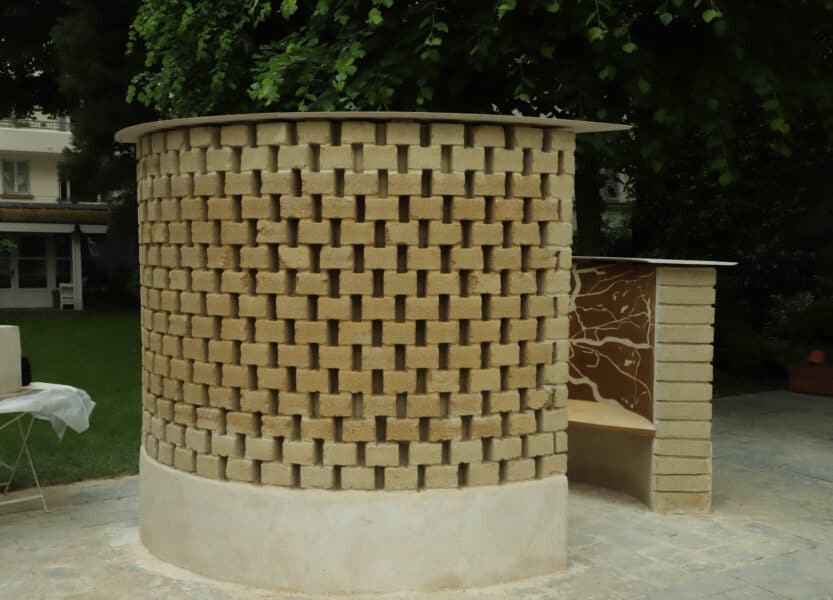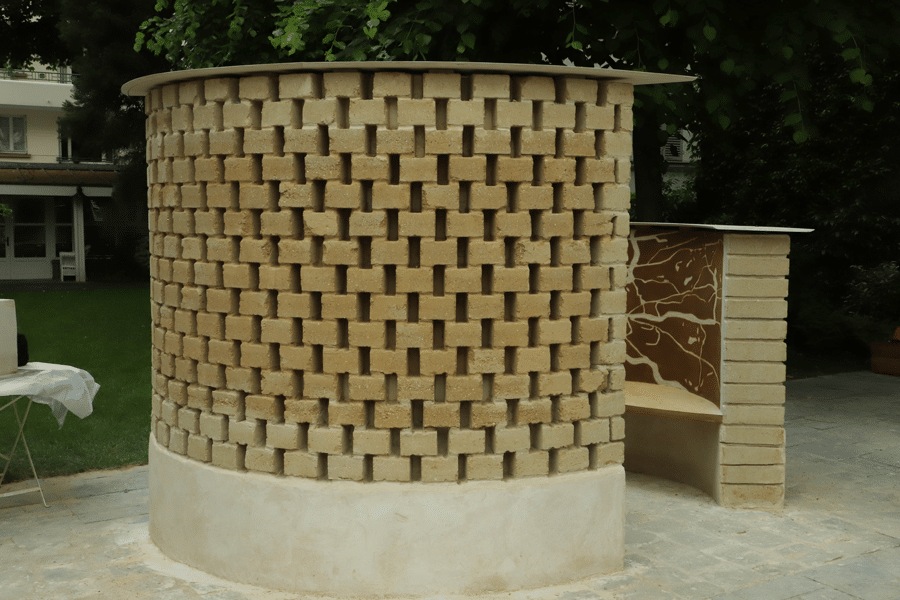Imagine going into a local big box construction and hardware store and finding a sustainability department comparable to the organic section of your local supermarket.
The building products there would be healthier for people and the planet, complete with environmental product declarations. A contractor taking a sustainable approach to building a subdivision might decide they’d rather pay a dollar more per square foot for an organic insulation panel made of hemp or a partition made of clay paper. Or they might decide on a material like hempcrete.
That’s just one possibility envisioned by Lola Ben Alon, professor at the Columbia University Graduate School of Architecture Planning and Preservation and director of the Natural Materials Lab and Building Tech curriculum. Ben Alon’s education in structural engineering and construction management initially focused on concrete as a mass material for an obvious reason: “We don’t build with wood or steel in Israel,” Ben Alon said.
But during her doctoral work at Carnegie Mellon, she switched emphasis to other types of mass materials that are more “ancient-inspired.” “I discovered earth or clay-rich soils that predated even Roman concrete,” she said. “Our earliest building environments were actually curated caves.”
That insight led to research in earth construction, first for her doctoral thesis and now in the Natural Materials Lab. “We are looking at earth-based materials and how we can rethink recipes and fabrication technologies, with the ultimate goal of decarbonizing the built environment,” she explained.

Criteria for natural building materials
Materials considered for Ben Alon’s lab must be non-toxic and not require chemical or mechanical processing. These features help make the materials accessible and easy to learn—like cob, a natural building material made from subsoil, water, fibrous organic material such as straw and sometimes lime.
“If you go to a cob or rammed earth workshop, within one or two days you know how to build with that material,” Ben Alon said. “That’s critical for another criteria, community engagement, which encompasses materials inherent in our embodied memory of how we use materials to attend to our buildings.”
Natural materials out of the mainstream
You don’t yet see many earth-based materials used in mainstream construction. “That has to do with the way we deliver building projects today,” Ben Alon said. “There’s a developer in Miami, a project in New York and the materials come from China and from somewhere in the Midwest. Everything spans geographies. So there’s a disconnect between the local environment and the product of the building.”
And there’s another critical issue—until recently, a basic material like cob didn’t appear in the International Residential Code (IRC). Then the Cob Research Institute, a voluntary advocacy group in Berkeley, California, conducted the tests and standardization processes necessary for cob to be included in the 2021 IRC. Until then, cob’s omission from building codes for earth construction techniques made it very hard to permit.
Curious why 3 million AECO professionals worldwide use Bluebeam to finish projects faster?

Even if a material is permitted, it may be challenging to find contractors or construction workers trained in appropriate building techniques. That means if a homeowner is deliberating between straw construction and an existing product, value engineering will go toward the status quo instead of the experiment—even if structures built with cob or rammed earth have been standing for hundreds of years.
Overcoming the melting myth
“We need more building products, more building policy—and for those to exist, we need more characterization of material performance structurally, thermally and over time,” Ben Alon said. For instance, bio-based materials do not melt in the rain, but they must be designed with erosion in mind.
“That means they need a pair of boots—at least a foot of footing material so they don’t absorb capillary moisture,” Ben Alon said. “And they also need an umbrella—at least three feet of overhang.”
In addition, a bio-based structure like a rammed earth house should have a stone or lime layer known as an erosion check every 1 ½ or 2 feet. This low-tech solution helps slow the velocity of water along the surface. Eroding some clay particles from the surface will reveal gravel aggregate, a more durable substance that will further slow rain and erosion. The earthen seams between aggregate also swell with water and keep it from penetrating into the walls.
Three streams of materials development
The Natural Materials Lab currently researches three streams of material development, from micro-scale material science to macro-scale structural science. “We do electron microscopy to understand the interaction between particles and develop new mixed designs for materials,” Ben Alon said. “Once we get a material mix we’re interested in, we test structural strength, thermal capacity and now we’re starting to check acoustics, too. So we operate between architectural design, material science and installation.”

In April 2023, an exhibit at the 1014 gallery space in Manhattan’s Upper East Side showcased work from the Natural Materials Lab. A panel discussion offered an important discourse between architecture, advanced manufacturing like 3D printing of earth and fibers, and building or material product development. “It was not only about the techy side of creating materials, but also about understanding the history and theory behind the social, cultural and political implications of using other types of materials,” Ben Alon said.
A primary focus of the three streams of research is what a new building assembly that captures carbon can look like. The starting point is materials that are healthy, thermally comfortable and radically low in carbon.
Another key part of Ben Alon’s mission is determining how the lab’s work can expand. “I want to have a collaboration with educators to consider alternative materials in their production, in their studio, in their classes,” she explained. “I’m available for collaborations across disciplines, across institutions to catalyze these materials and education.”
Her passion for making connections continues to center on putting a modern spin on ancient materials—and bringing them into building construction again as an answer to today’s climate issues.












